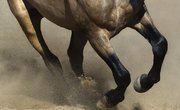Norwegians pioneered this high-flying winter sport in the 19th century. The mechanics of ski jumping developed over the years, with athletes adapting the bent-upper-body, forward lean and “V” ski shape by the modern era. Jumpers are evaluated based on distance traveled and style performed, both in the air and upon landing.
Norwegians pioneered this high-flying winter sport in the 19th century. The mechanics of ski jumping developed over the years, with athletes adapting the bent-upper-body, forward lean and “V” ski shape by the modern era. Jumpers are evaluated based on distance traveled and style performed, both in the air and upon landing.
Norwegians pioneered this high-flying winter sport in the 19th century. The mechanics of ski jumping developed over the years, with athletes adapting the bent-upper-body, forward lean and “V” ski shape by the modern era. Jumpers are evaluated based on distance traveled and style performed, both in the air and upon landing.
Individual (Normal and Large Hill)
Men compete on both a large hill (90 meters) and normal hill (70 meters) while women only compete on the latter. The jumper with the highest combined score from two competitive rounds wins the medal event.
Norwegians pioneered this high-flying winter sport in the 19th century. The mechanics of ski jumping developed over the years, with athletes adapting the bent-upper-body, forward lean and “V” ski shape by the modern era. Jumpers are evaluated based on distance traveled and style performed, both in the air and upon landing.
Team Event
The team event features four jumpers per competing country, and is only contested on the large hill.
